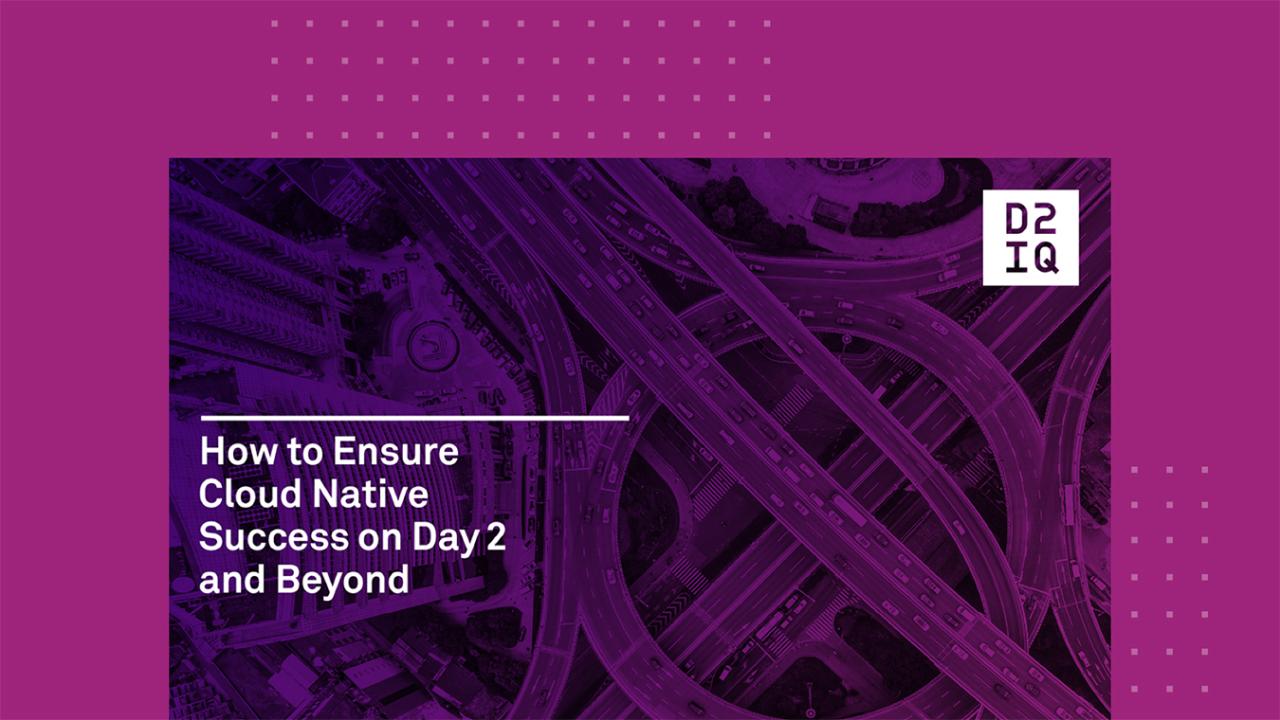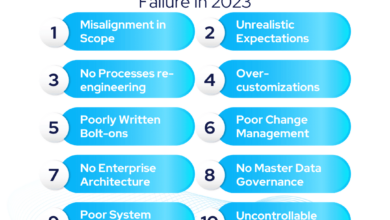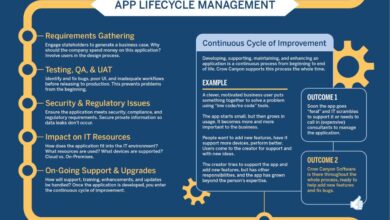
Right Partners The Key to Cloud Native Commerce Success
Right partners: the key to achieving cloud native commerce success is selecting the right partners. This isn’t just a catchy phrase; it’s the bedrock of building a thriving, scalable, and secure online business in today’s dynamic digital landscape. Choosing the wrong partners can lead to costly integration headaches, security vulnerabilities, and ultimately, a failed launch. This post dives deep into what makes a partner “right,” how to find them, and how to build a successful, long-term relationship that fuels your cloud native commerce growth.
We’ll explore the crucial characteristics of ideal partners, from their technical expertise and scalability to their commitment to security and compliance. We’ll also discuss the various types of partners available (technology providers, consultants, managed service providers, etc.), helping you navigate the complexities of choosing the best fit for your specific needs. We’ll even touch on practical strategies for managing these partnerships, ensuring smooth collaboration, and resolving any conflicts that may arise along the way.
Get ready to unlock the secrets to building a robust and successful cloud native commerce ecosystem!
Defining “Right Partners” in Cloud Native Commerce
Choosing the right partners is paramount for success in cloud native commerce. It’s not just about finding vendors; it’s about building a robust ecosystem that supports your specific business needs, scales with your growth, and ensures the security of your operations. The wrong partners can lead to costly delays, integration nightmares, and security vulnerabilities, ultimately hindering your ability to compete effectively.
The ideal partners for cloud native commerce initiatives possess a unique blend of technical expertise, a proven track record of scalability, and a commitment to robust security practices. They understand the nuances of modern commerce, including microservices architecture, containerization, serverless functions, and the importance of a seamless customer experience. Moreover, they should be able to adapt to the ever-evolving landscape of cloud technologies and maintain a high level of agility.
Characteristics of Ideal Cloud Native Commerce Partners
Several key characteristics distinguish ideal partners. These go beyond simple technical capabilities and delve into areas like communication, collaboration, and shared vision. A successful partnership requires a strong foundation of trust and mutual understanding.
- Deep Technical Expertise: Partners should possess in-depth knowledge of cloud-native technologies, including Kubernetes, Docker, serverless platforms (like AWS Lambda or Google Cloud Functions), and relevant databases (like Cassandra or MongoDB). They should also have experience with API gateways, CI/CD pipelines, and observability tools.
- Proven Scalability and Performance: The partner’s infrastructure and solutions must be able to handle peak loads and sudden traffic spikes without compromising performance. This requires a robust architecture and a history of successfully scaling applications to meet demanding business requirements. Consider partners with experience in handling Black Friday or other high-traffic events.
- Robust Security Measures: Security is paramount in e-commerce. Partners should demonstrate a commitment to security best practices, including data encryption, access control, and regular security audits. Certifications like ISO 27001 or SOC 2 are strong indicators of a partner’s commitment to security.
- Strong Communication and Collaboration: Effective communication is crucial for a successful partnership. The partner should be responsive, proactive, and able to clearly articulate technical details in a way that’s understandable to non-technical stakeholders. A collaborative approach is essential for navigating challenges and ensuring alignment on goals.
Criteria for Evaluating Potential Partners
A structured evaluation process is crucial for selecting the right partners. This involves a multi-faceted approach that considers technical capabilities, business alignment, and long-term viability.
| Criterion | Description | Example |
|---|---|---|
| Expertise | Demonstrated experience in cloud-native technologies and e-commerce solutions. Look for case studies and references. | A partner with successful deployments of similar e-commerce platforms on Kubernetes. |
| Scalability | Ability to handle peak traffic and future growth. Inquire about their infrastructure and scaling mechanisms. | A partner with a proven track record of scaling applications to handle millions of requests per day. |
| Security | Robust security measures, including data encryption, access control, and regular security audits. Check for relevant certifications. | A partner with ISO 27001 certification and a detailed security policy. |
| Alignment with Business Goals | The partner’s approach should align with your overall business strategy and objectives. | A partner who understands your specific business needs and can tailor their solutions accordingly. |
Comparison of Partner Types, The key to achieving cloud native commerce success is selecting the right partners
Different partner types offer unique strengths and weaknesses. Understanding these differences is essential for making informed decisions.
- Technology Providers: Offer specific software or platform solutions. They may lack broader consulting expertise or managed services capabilities.
- Consulting Firms: Provide strategic guidance and implementation support but may not offer ongoing managed services.
- Managed Service Providers (MSPs): Offer ongoing management and support for cloud infrastructure and applications. They often specialize in specific cloud platforms.
Framework for Assessing Partner Capabilities
A comprehensive framework should evaluate partners across multiple dimensions. This helps ensure a holistic assessment and minimizes the risk of overlooking critical factors.
- Technical Assessment: Evaluate the partner’s expertise in relevant technologies and their ability to meet your technical requirements.
- Scalability Assessment: Assess their infrastructure’s ability to handle current and future workloads. Consider performance testing and capacity planning.
- Security Assessment: Evaluate their security posture, including certifications, security policies, and incident response plans.
- Business Alignment Assessment: Determine whether their approach aligns with your business goals, culture, and long-term vision.
- Reference Checks: Contact previous clients to gain insights into the partner’s performance and reliability.
Technology Selection and Integration for Cloud Native Commerce

Building a successful cloud native commerce platform requires careful consideration of the technology stack. The right technologies, seamlessly integrated, are crucial for scalability, agility, and a superior customer experience. Choosing the wrong tools, or struggling with integration, can lead to significant delays, increased costs, and ultimately, a less-than-optimal online shopping experience. This section will delve into the essential technologies, successful integration examples, common challenges, and a step-by-step guide for a smooth implementation.
Essential Technologies for Cloud Native Commerce
Selecting the right technologies is paramount. The following table Artikels key technologies, vendors, features, and potential integration hurdles. Remember that the “best” technology will depend on your specific business needs and existing infrastructure.
| Technology | Vendor Examples | Key Features | Integration Challenges |
|---|---|---|---|
| Microservices Architecture | N/A (Architectural Pattern) | Independent deployment, scalability, fault isolation | Complex orchestration, inter-service communication management |
| Containerization (Docker, Kubernetes) | Docker, Kubernetes (CNCF), Red Hat OpenShift | Portability, scalability, efficient resource utilization | Container image management, orchestration complexity, security |
| Serverless Computing | AWS Lambda, Google Cloud Functions, Azure Functions | Scalability, cost-effectiveness, reduced operational overhead | Vendor lock-in, cold starts, debugging complexities |
| API Gateway | Kong, Apigee, AWS API Gateway | Centralized API management, security, monitoring | API design consistency, rate limiting, security configuration |
| Database (NoSQL & Relational) | MongoDB, Cassandra, PostgreSQL, MySQL | Scalability, data consistency, performance optimization | Data consistency across different database types, schema migration |
| Message Queue | Kafka, RabbitMQ, Amazon SQS | Asynchronous communication, decoupling of services, improved scalability | Message ordering, fault tolerance, data consistency |
| CI/CD Pipeline | Jenkins, GitLab CI, CircleCI | Automated builds, testing, and deployments | Integration with various tools, pipeline complexity, security |
| Monitoring and Logging | Prometheus, Grafana, Elasticsearch, Fluentd, Kibana (EFK Stack), Datadog | Real-time monitoring, performance analysis, troubleshooting | Data aggregation, visualization, alert configuration |
Successful Technology Integrations in Cloud Native Commerce
A prime example is using Kubernetes to orchestrate microservices, each handling a specific aspect of e-commerce (e.g., product catalog, shopping cart, order processing). These microservices can be independently scaled based on demand, ensuring optimal performance during peak shopping seasons. Integrating a message queue like Kafka allows for asynchronous communication between these services, improving resilience and scalability. Another successful integration involves using serverless functions for tasks like image resizing or email notifications, reducing operational overhead and cost.
Companies like Netflix and Spotify have successfully leveraged similar architectures, demonstrating the scalability and resilience of this approach.
Challenges of Integrating Disparate Systems and Platforms in a Cloud Native Architecture
Integrating legacy systems with a new cloud native architecture presents significant challenges. Data migration can be complex and time-consuming, requiring careful planning and execution. Different systems may use incompatible data formats or APIs, requiring custom adapters or middleware. Ensuring data consistency and security across various systems is crucial, demanding robust security measures and data governance policies. Moreover, managing dependencies between services and ensuring seamless communication across platforms requires careful orchestration and monitoring.
Step-by-Step Guide for Integrating New Technologies into an Existing Cloud Native Commerce Infrastructure
1. Assessment
Thoroughly evaluate the new technology’s capabilities and compatibility with the existing infrastructure.
2. Planning
Develop a detailed integration plan, outlining the steps, timelines, and resources required. Consider potential risks and mitigation strategies.
3. Proof of Concept (POC)
Build a small-scale prototype to test the integration and identify potential issues before full-scale deployment.
4. Development and Testing
Develop the necessary integrations, ensuring thorough testing and quality assurance.
5. Deployment
Deploy the integrated system incrementally, monitoring performance and addressing any issues that arise.
6. Monitoring and Optimization
Continuously monitor the system’s performance and make necessary optimizations to ensure optimal efficiency and scalability.
Security and Compliance in Cloud Native Commerce Partnerships

Choosing the right partners is crucial for cloud native commerce success, but it’s equally vital to prioritize security and compliance throughout the partnership lifecycle. A breach or non-compliance issue can severely damage your brand reputation and incur significant financial penalties. This section explores the security risks involved and Artikels best practices to mitigate them.Security risks inherent in cloud native commerce partnerships are multifaceted.
Data breaches, unauthorized access, and vulnerabilities in partner systems are all significant concerns. The distributed nature of cloud native architectures, involving multiple vendors and potentially geographically dispersed infrastructure, expands the attack surface. Furthermore, the complexities of integrating various systems increase the potential for misconfigurations and security loopholes. Compliance with regulations like GDPR, CCPA, and PCI DSS adds another layer of complexity, requiring careful consideration of data handling and processing across all partner ecosystems.
Potential Security Risks Associated with Cloud Native Commerce Partnerships
Partnering for cloud native commerce introduces several security risks. These include the risk of data breaches resulting from vulnerabilities in a partner’s systems or inadequate security practices. Unauthorized access to sensitive customer data, intellectual property, or internal systems poses a significant threat. Furthermore, the lack of consistent security protocols across different partners can create gaps in overall security posture.
Finally, insufficient due diligence during partner selection can lead to unforeseen security liabilities.
Best Practices for Ensuring Data Security and Compliance
Robust security and compliance practices are paramount. This necessitates a thorough vetting process for potential partners, assessing their security posture, certifications (e.g., ISO 27001), and compliance history. Implementing strong data encryption both in transit and at rest is essential, alongside regular security audits and penetration testing of integrated systems. A comprehensive data governance framework, defining roles, responsibilities, and data access controls across all partners, is crucial.
This framework should clearly Artikel data retention policies and procedures for incident response and breach notification. Regular security training for employees involved in partner interactions is also vital to maintaining a strong security culture.
Security Measures Checklist for Partner Selection and Onboarding
Before onboarding any partner, a comprehensive security checklist should be implemented. This checklist should include:
- Security Audits and Certifications: Verify the partner’s security posture through independent audits and relevant certifications (e.g., ISO 27001, SOC 2).
- Data Encryption: Ensure data encryption both in transit (using HTTPS/TLS) and at rest (using strong encryption algorithms).
- Access Controls: Implement strong access controls, limiting access to sensitive data based on the principle of least privilege.
- Vulnerability Management: Require partners to have a robust vulnerability management program, including regular security scans and patching.
- Incident Response Plan: Establish a clear incident response plan outlining procedures for handling security incidents and breaches.
- Data Governance Framework: Define a comprehensive data governance framework outlining data ownership, access controls, and retention policies.
- Contractual Agreements: Include strong security and compliance clauses in all partner contracts, outlining responsibilities and liabilities.
Designing a Secure Communication and Data Exchange Protocol
Secure communication and data exchange protocols are essential. This requires utilizing secure communication channels like HTTPS/TLS for all data transfers. Data should be encrypted using strong encryption algorithms both in transit and at rest. APIs should be secured using appropriate authentication and authorization mechanisms, such as OAuth 2.0 or OpenID Connect. Regular monitoring of API traffic for suspicious activity is also critical.
Consider implementing a message queueing system with encryption and access controls for asynchronous communication. Finally, a robust logging and monitoring system should be in place to track all data exchanges and identify potential security issues. For sensitive data, consider employing techniques like tokenization or data masking to further protect sensitive information.
Managing and Optimizing Cloud Native Commerce Partnerships
Building a successful cloud native commerce strategy isn’t just about choosing the right partners; it’s about effectively managing those partnerships throughout their lifecycle. This involves establishing clear communication channels, implementing robust monitoring systems, and developing proactive strategies for conflict resolution and scaling. A well-managed partnership ecosystem ensures your business remains agile, responsive, and competitive in the ever-evolving digital landscape.
Effective Communication and Collaboration Strategies
Open and consistent communication is the cornerstone of any successful partnership. This requires establishing multiple channels for information sharing, from regular meetings and progress reports to dedicated communication platforms like Slack or Microsoft Teams. A shared project management system, such as Jira or Asana, allows for transparent task assignment, progress tracking, and issue resolution. Beyond formal channels, fostering a culture of open dialogue and quick response times is crucial.
For instance, a weekly cross-functional meeting between your team and the partner’s technical and project management teams can proactively address potential roadblocks and maintain alignment on goals. This collaborative approach minimizes misunderstandings and ensures everyone is working towards the same objectives.
Partner Performance Monitoring and SLA Adherence
Monitoring partner performance is vital to ensure the ongoing success of your cloud native commerce initiatives. This involves establishing key performance indicators (KPIs) aligned with your business goals and the agreed-upon service level agreements (SLAs). These KPIs might include uptime, response times, transaction success rates, and customer satisfaction scores. Regular reporting and analysis of these metrics allows for early identification of potential issues and proactive interventions.
For example, if a partner’s uptime consistently falls below the agreed-upon SLA, you can immediately initiate discussions to address the root cause and implement corrective actions. Automated monitoring tools can greatly simplify this process, providing real-time insights and alerts.
Issue Resolution and Conflict Management Processes
Disagreements and conflicts are inevitable in any partnership. Having a well-defined process for addressing these issues is crucial to maintain a positive working relationship. This involves establishing escalation paths, clearly defined roles and responsibilities, and a structured approach to conflict resolution. A formal escalation process, for example, might involve starting with direct communication between the relevant team members, followed by involvement of senior management if necessary.
Mediation or arbitration might be considered as a last resort. Regular reviews of the partnership agreement and open communication about potential challenges can help prevent conflicts from escalating. Documenting all communication and agreed-upon solutions is also essential for maintaining a clear record of the partnership’s history.
Scaling Partnerships to Meet Evolving Business Needs
As your business grows and evolves, your cloud native commerce partnerships need to scale accordingly. This requires a proactive approach to planning for future needs and identifying potential bottlenecks. Regularly reviewing your partnership strategy, considering factors like increased traffic, new features, and expansion into new markets, is essential. This review should involve assessing the scalability of the partner’s infrastructure and services and identifying potential limitations.
For example, if your business anticipates a significant increase in online orders during peak seasons, you need to ensure your partners have the capacity to handle the increased load. Proactive planning and communication will prevent scaling challenges from disrupting your business operations.
Case Studies of Successful Cloud Native Commerce Partnerships
Choosing the right partners is crucial for achieving cloud native commerce success. Let’s examine some real-world examples of organizations that have leveraged strategic partnerships to build robust and scalable e-commerce platforms. These case studies will highlight the key factors that contributed to their success, as well as the challenges they overcame. Understanding these successes and failures can provide valuable insights for businesses embarking on their own cloud native commerce journeys.
Three Successful Cloud Native Commerce Partnerships
The following table details three successful partnerships, focusing on the contributing factors and challenges faced. Analyzing these diverse examples reveals common themes and best practices for selecting and managing cloud native commerce partners.
| Company | Partner | Key Success Factors | Challenges Overcome |
|---|---|---|---|
| Shopify | Amazon Web Services (AWS) | AWS’s scalability and reliability ensured Shopify could handle peak traffic during sales events. The integration of AWS services into Shopify’s platform was seamless, allowing for rapid development and deployment of new features. Shared commitment to innovation fostered a collaborative environment. | Initial integration complexities were overcome through dedicated engineering teams and thorough planning. Managing the cost of AWS services required careful monitoring and optimization. |
| Nike | Salesforce Commerce Cloud | Salesforce’s robust platform provided Nike with the flexibility to personalize customer experiences across multiple channels. The integration with Nike’s existing systems was efficient, leveraging Salesforce’s pre-built connectors. The partnership fostered a strong data-driven approach to commerce. | Data migration and integration presented initial challenges, requiring careful data mapping and cleansing. Ensuring consistent branding across all channels required close collaboration between Nike and Salesforce teams. |
| Walmart | Google Cloud Platform (GCP) | GCP’s advanced analytics capabilities helped Walmart optimize its supply chain and personalize customer offers. The scalability of GCP allowed Walmart to handle massive traffic volumes during peak shopping seasons. The partnership leveraged Google’s expertise in AI and machine learning. | Maintaining data security and compliance with stringent regulations required robust security protocols and ongoing audits. Integrating GCP with Walmart’s legacy systems required significant effort and coordination. |
Key Learnings and Best Practices
These case studies demonstrate the importance of selecting partners with complementary strengths and a shared vision. Successful partnerships require strong communication, collaborative problem-solving, and a commitment to continuous improvement. Careful planning and thorough due diligence are essential in mitigating potential challenges. A clear understanding of the partner’s capabilities and limitations is crucial for effective integration and ongoing management.
Regular performance reviews and proactive communication are key to maintaining a healthy partnership.
Comparison of Partner Selection and Management Approaches
While each partnership had unique aspects, common themes emerged. Shopify and Nike prioritized seamless integration with existing systems, emphasizing ease of use and rapid deployment. Walmart focused on leveraging advanced analytics and AI capabilities offered by GCP. All three companies invested heavily in communication and collaboration, fostering strong relationships with their partners. The approaches differed in terms of the level of customization required, reflecting the unique needs and priorities of each organization.
However, the underlying principle of selecting partners aligned with their strategic goals remained consistent across all three examples.
Closing Notes
Successfully navigating the world of cloud native commerce requires more than just a great product; it demands strategic partnerships. By carefully selecting partners based on expertise, scalability, and a shared commitment to security, you lay the foundation for a resilient and adaptable business. Remember, the right partners aren’t just vendors; they’re extensions of your team, working collaboratively to achieve your shared vision.
This journey requires diligence, but the rewards – a thriving cloud native commerce operation – are well worth the effort. So, take the time to find your ideal partners and watch your business soar!
FAQ Compilation: The Key To Achieving Cloud Native Commerce Success Is Selecting The Right Partners
What are the biggest risks of choosing the wrong cloud native commerce partner?
Choosing the wrong partner can lead to security breaches, integration failures, project delays, cost overruns, and ultimately, business failure. Incompatibility with your existing systems and lack of expertise are common issues.
How can I ensure my chosen partner prioritizes security?
Look for certifications (e.g., ISO 27001), robust security policies, and a proven track record of data protection. Ask about their incident response plan and penetration testing procedures.
What if my partner’s performance doesn’t meet the SLA?
Your contract should Artikel clear procedures for addressing performance issues. This may involve penalties, renegotiation, or even termination of the contract.
How often should I review my cloud native commerce partnerships?
Regular reviews (e.g., quarterly or annually) are essential to ensure ongoing alignment with your business goals and to identify potential problems early.





